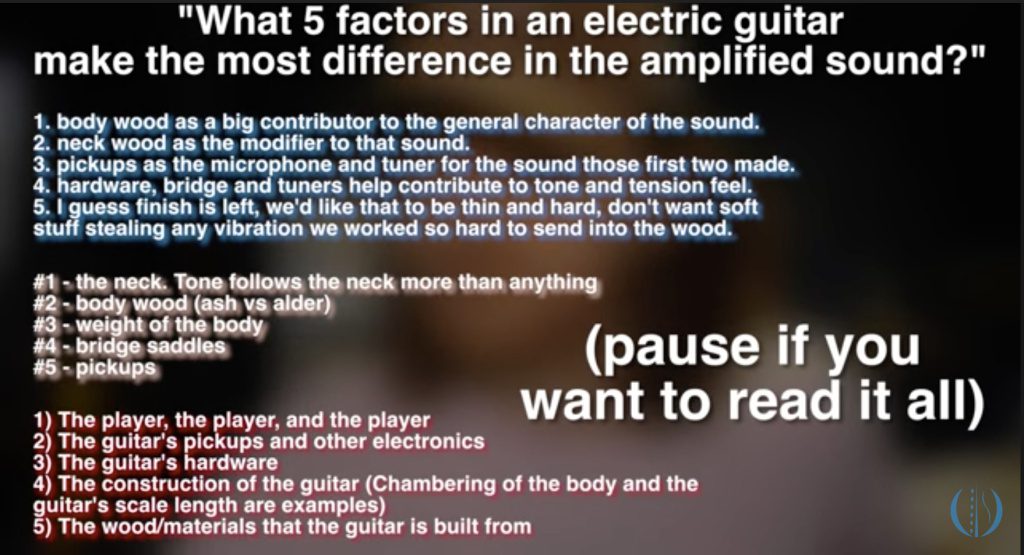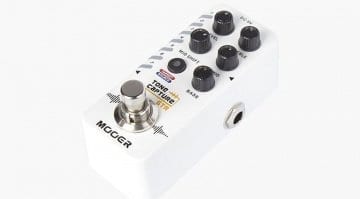Where does your electric guitar’s tone come from?
YouTuber Jim Lill conducts a series of tests
The term ‘tone’ is used every single day by millions of guitarists worldwide. And often used to sell products, whether it’s guitars, amplifiers, pedals, or guitar-centric records. But where does your electric guitar tone actually come from?
Where Does Tone come from?
It certainly emanates from either the equipment we choose to use, or maybe even from the player themselves. And yet the debate still carries on to this day: Where does your electric guitar tone come from? An interesting video has popped up online in the last fortnight, posted on YouTube by content-creator Jim Lill. In the video, just under 12 minutes long, Lill attempts, as best as possible, to break down the guitar into its constituent parts, to try locate where exactly the tone of the guitar comes from.
Searching for Tone
Jim asked three guitar makers he respected, “What 5 factors in an electric guitar make the most difference in the amplified sound?” Each one gave different answers to this, including things like the player, the woods used for the neck and body, the pickups, the hardware, and the construction.
Breaking It Down
What is quite funny to watch, is Jim slowly but surely, breaking down an electric guitar component by component, and bit by bit going from a Telecaster-style instrument, all the way down to a bridge, pickup and a set of tuning pegs with a nut. Along the way we get comparisons to the original guitar tone of his Anderson T-Style guitar, which uses the same pickups as his test guitar. This lets us gauge the tonal similarities, as the instrument is slowly stripped back to the essential basics.
No Body, No Neck
I like that he uses a piece of 2×4 timber at one point, and eventually manages to do away with both a guitar body and neck by the very end of the video. If you haven’t already, I suggest you take 12 minutes out of your day to watch this video and see what you think of this attempt to find where the electric guitar tone comes from.
Did the video confirm your opinions, or did you disagree with any aspect of it? Let us know in the comments section below.
Video
You are currently viewing a placeholder content from YouTube. To access the actual content, click the button below. Please note that doing so will share data with third-party providers.
8 responses to “Where does your electric guitar’s tone come from?”










Love this!
Insofar as SOLID BODY guitars are concerned, we have accepted the marketing for the past 70 years about various woods and shapes. Fender used and uses Alder because it is readily available. The one builder was right about the player being the most important factor. There is a video out of Joe Satriani playing on a crappy guitar to one his songs and it sounds just like him.
Awesome! I’ve worked for some big name guitar companies and I always said it’s in the fingers, “but sshh, you can’t tell anybody.” We can’t sell $5K guitars if we lift the veil.
Tone is in the fingers, the pickups/electronics and the amplifier. The rest is a joke.
I enjoyed this, but I think the methodology is pretty flawed. That is, one has to let the strings ring, listening for overtones. All guitars sound similar when the sound is distorted, processed, etc.
I would love to see a reaction video of Paul Reed Smith watching that.
Maybe I’m missing something listening to my cell phone but I don’t hear any difference between what you play on the no guitar versus the guitar. This sure will make my buying process a lot easier on my next guitar.
Sound is about vibration, tone is the measure of vibration, the more dense the grain of the wood used and the older the wood is, it petrifies over time and becomes harder, vibrations are more significant in the hardness of the surface, harder and older the timber, the more vibration, the more tone in the material itself, agreed that a great player will make a beautiful sound out of a 4×2, but that’s another viewpoint
You are currently viewing a placeholder content from Facebook. To access the actual content, click the button below. Please note that doing so will share data with third-party providers.
More InformationYou are currently viewing a placeholder content from Instagram. To access the actual content, click the button below. Please note that doing so will share data with third-party providers.
More InformationYou are currently viewing a placeholder content from X. To access the actual content, click the button below. Please note that doing so will share data with third-party providers.
More Information